In the battle for portable MIDI controllers that will fit in front of your laptop and not bust your budget, there are 2 clear contenders: the Korg NanoSeries and the new Akai Laptop Series of controllers. To help you decide which controller might be the strongest, we pit them against each other in a battle of performance. Read on to learn who won our mini MIDI prize fight.
MIDDLEWEIGHT BOUT
Akai LPK25 Vs. Korg NanoKey
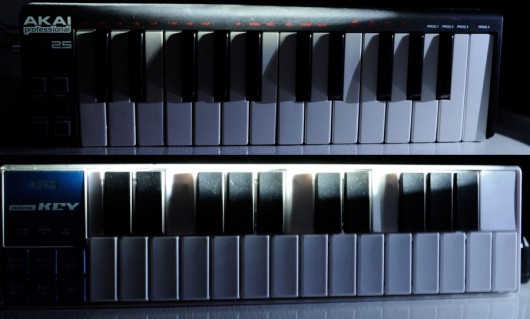
Tale of the Tape

Round 1: Build Quality
Both controllers can take a beating, but the aesthetic choices of the LPK25 make it a much more attractive and robust-looking controller. The extra height also means you might actually be taken seriously playing on the keys, while the nano key is truly a glorified computer keyboard with large black and white keys.
Round 2: Features
The LPK boasts one of the only clear features of these minimal devices. Its equipped with a fully-functional arpeggiator with tap tempo, 4 types of arpeggiation and 8 different note values. The NanoKey is the only keyboard with pitch bend capacity, and both have the ability to move up or down the full octave range. The LPK has a sustain button for great expression, while the Nano has a mod button for single-direction modulation.
Both controllers boast velocity sensitivity, but just as with the pads, the accuracy of that sensitivity is very different on each of these controllers. The Akai keyboard has a clear range of velocities, making it easy to play soft or loud notes, while I found it impossible get the Korg to play anything lower than 40% velocity.
Round 3: Performance
The key difference in performance is the keyboard layout and feel of each controller. The Akai is obviously structured in a more traditional keyboard layout and does look and feel like a real keyboard, including the ability to naturally play chords, which is significantly more difficult on the NanoKey. The NanoKey on the other hand has the same key action as a typical laptop keyboard. It’s responsive, but hardly the feel you want while playing a musical keyboard. For $40 street price, the NanoKey is a decent value, and an inexpensive way to get a mini keyboard, but a $20 bump in price on the Akai LPK25 provides what I’d judge to be a 200% increase in performance.
Winner
This was an easy fight to predict from the outset, as the smaller and less robust NanoKey got seriously beat up by the larger and more mature LPK25. Both controllers offer an inexpensive and portable way to get a MIDI keyboard but only one — the LPK — actually gets the job done.
TITLE FIGHT
Akai LPD8 VS. Korg NanoPad
The Tale of the Tape

Round 1: Build Quality
The LPD8 wins this round hands down. Even though they are both plastic controllers, the Akai feels like it will take more of a beating, and the pads are more sturdy and playable. Even the knobs on the LPD — although short — felt like they could take some serious turning. My biggest gripe with the NanoPad is the X/Y pad, which over time became defective. Hard button presses or pressure would send eratic data from the X/Y pad, even if my hand was nowhere near it.
Round 2: Features
The combination of an X/Y pad and 12 pads is a nice layout for controllerism and cue-point juggling. Without 6 pads per deck, it would have been hard for me to pull off my popular we will rock you routine on YouTube. The LPD8, while lacking the fun-to-play-with X/Y, comes back with a nice punch of its own: 8 knobs for greater analog control and flexibility. It’s a toss up on which feature set is really better. For sampler playback and volume control in Serato Scratch Live, the LPD8 is a clear winner, but for 5 cue points and a play toggle, the NanoPad is nearly perfect.
While both controllers profess to have velocity sensitiviy, the Nano’s velocity is not very playable and really only offers mid and high ranges. The LPD8 offers a much truer velocity range, with sensitivity down in the lowest values.
The LPD8 also features an interesting feature called CC mode, where you can play 8 analog CC’s with the pads — offering a creative way to work with FX through the pads.
Round 3: Performance
Performance is synonymous with joy of use and reliability, and in both of these departments the Akai really shines. The backlit pads light up orange when you strike them and are a lot of fun to play. They are also MIDI programable, so you can get LED feedback for things like stored loops, cue points or active FX. The Nano’s pads are firm and playable, but don’t have the same feel or size as the LD8, which are comparable to most of the other Akai pad products. The 8 knobs, while not full size, were remarkably playable and sturdy for such a low-profile product. Korg attempted the same thing on its NanoKontrol, and had much less impressive results. The only drawback of knobs with a low height is that they can only be manipulated with the finger tips — not with the full fingers. This results in a tweak-able feel and not a real performance action.
The X/Y pad on the Nano is a lot of fun to play with, and when applied to FX creates great results. Unfortunately my X/Y pad has been basically rendered useless by continuing manufacturing defects which send out random data and mess up the mix, making the X/Y pad a nice tool to look at but not to use.
Winner
Korg’s NanoPad really struck gold with the idea of small, inexpensive controllers that are portable and easy to use. However, Akai has come in late in the game and really stolen the show with a much better-quality controller that is a clear winner in 2 out of 3 rounds. With the prices basically the same, its an easy choice to go with the more robust and significantly more attractive Akai LPD8.


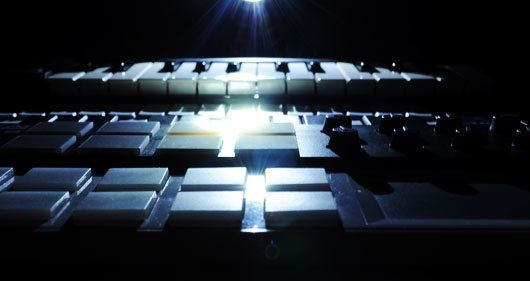

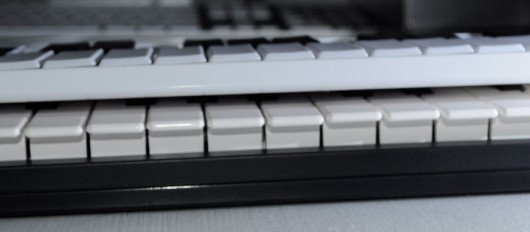
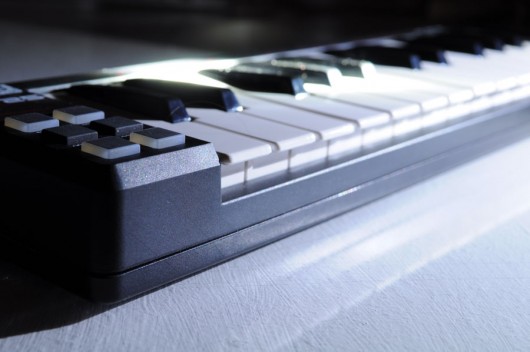

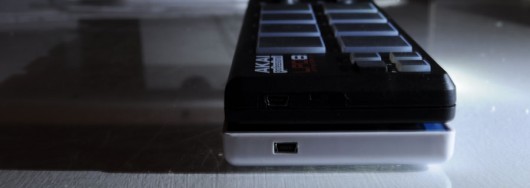
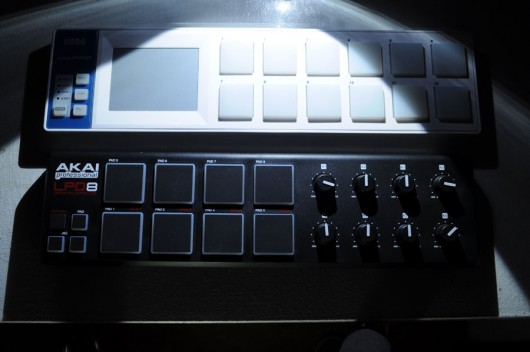




![ROLI’s Seaboard RISE 2: seamless integration into the expressive world of MPE [REVIEW]](https://s11234.pcdn.co/wp-content/uploads/2023/11/Screenshot-2023-11-16-at-5.02.41-pm.png)




